Every once in awhile we get a question or comment from a fruit gardener that their citrus fruit tastes terrible. This week, Paul Marini wrote in to Ask Gardenerd with a different question that is related: “I know the Meyer lemon tree is a combination of lemon and mandarin orange. I am pretty sure there are orange branches growing out of the bottom half [of my tree]. Is it OK to leave them on, or should I cut them off?”
Thanks for this question, Paul. It leads to a larger subject that will provide an answer. Let’s talk about rootstock.
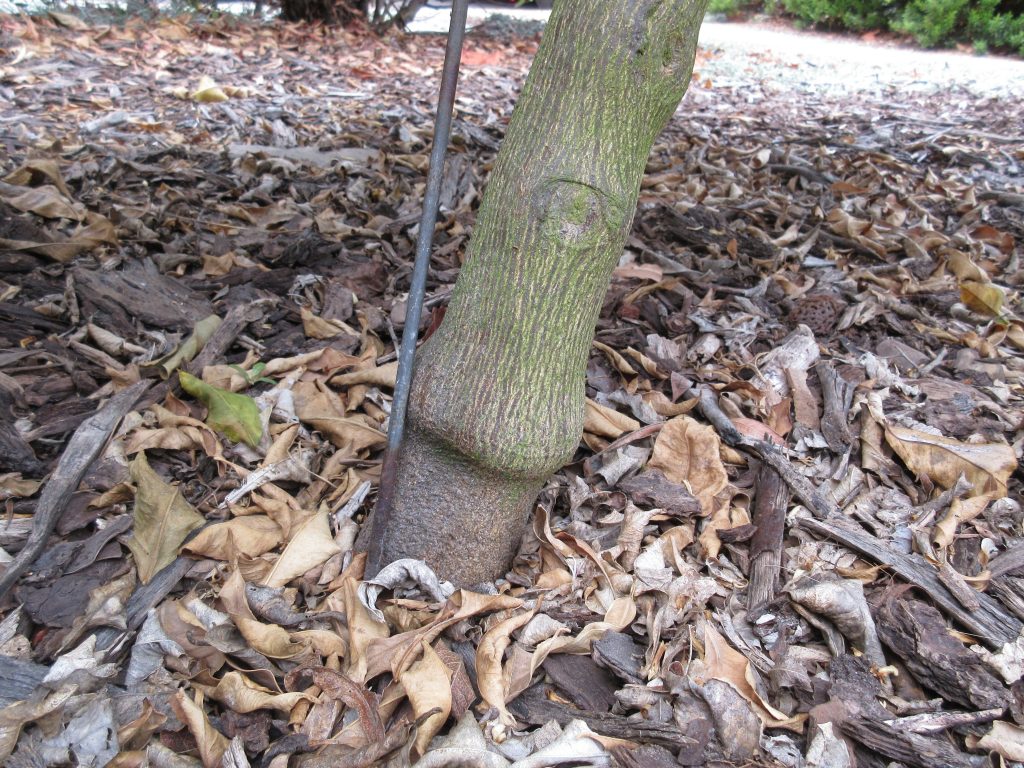
The graft union on a lemon tree. 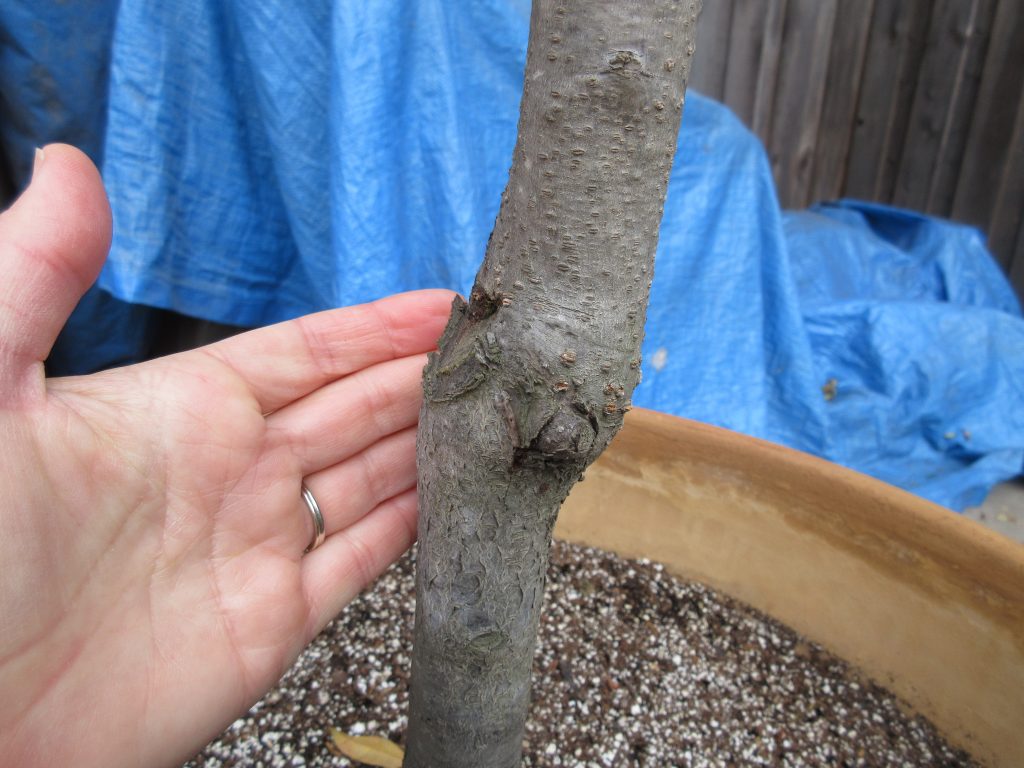
Nectarine tree graft union 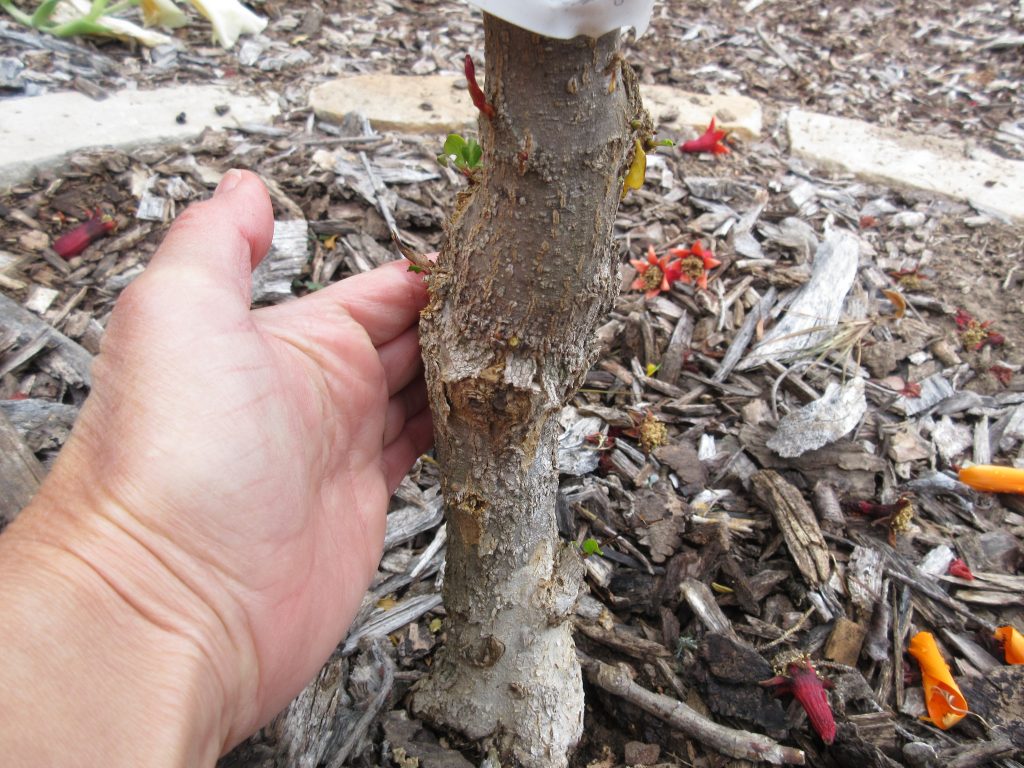
Graft union on a pomegranate tree
What is Rootstock?
Rootstock is essentially the bottom part of a tree, below the graft union. It’s the root system upon which a desired fruit tree variety is grafted. The rootstock controls the mature size of the tree, and is always in the same family (i.e. a stone fruit rootstock is used to graft plums, nectarines, peaches, etc. While a citrus rootstock is used to graft lemons, limes, oranges, etc. Pome fruits like pears, apples, and quince have their own sets of rootstock suitable for the job.) Rootstock is also chosen based on its ability to fight certain diseases, or tolerate heavy, poor-draining soils in areas known for those issues.
Generally speaking, the rootstock variety, on its own, produces unpalatable fruit. If shoots develop from the rootstock, those grow into branches and eventually produce fruit that is very different from the desired variety you planted. Some people move to a new home and find an old citrus tree with fruit that tastes terrible. The most likely reason for this is not that it hasn’t been fed properly, but that the rootstock took over the tree (probably after the desired branches died off).
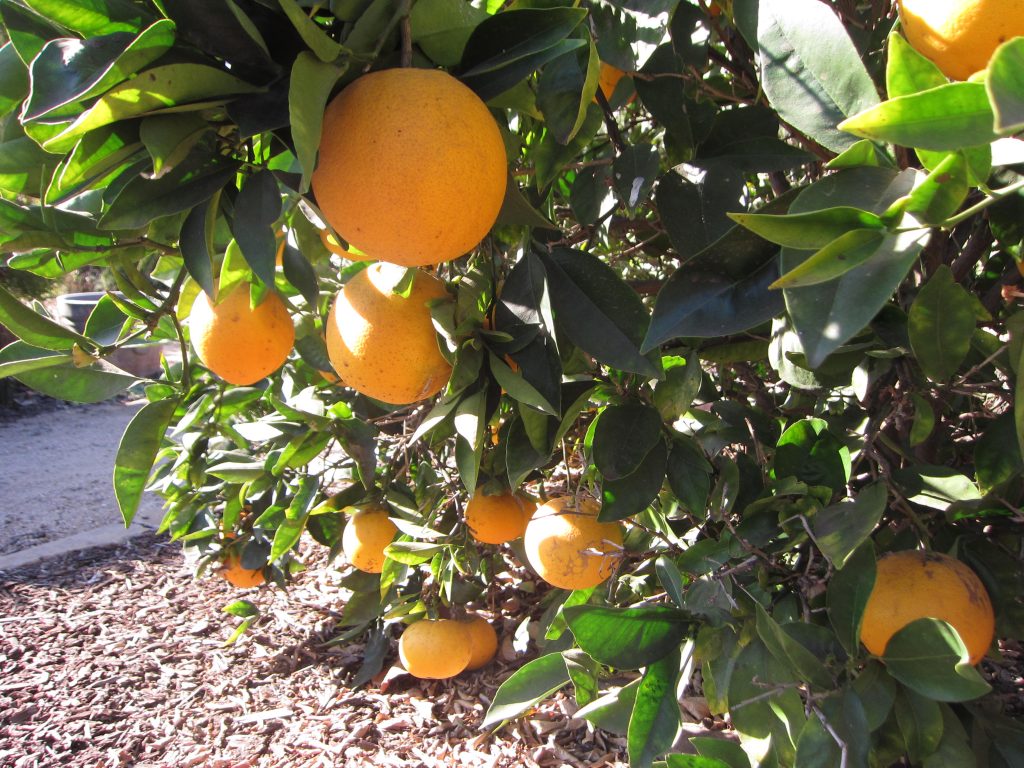
What to Look For
Take a look at your fruit trees and identify the graft union. The graft union should be slightly swollen in diameter and you may find a curve right above it. That’s where the scion from the desired fruit was grafted to the rootstock.
Check for any branches growing from below that graft union.
Remove those branches. They are stealing energy and nutrients from your desired fruit. If the whole tree is now rootstock, call a time of death and pull it. No amount of fertilizer will make this fruit taste sweet.
NOTE: a few fruit trees are rarely if ever grafted: figs and loquats being two. If you can’t find the graft union, do a little research on your type of fruit to see whether it is a grafted tree or not.
So the answer to your question about whether to leave those wayward branches or not, Paul, is–remove them. Find a sunny location to plant that orange tree you want and enjoy the benefits in a couple years.
For more information about growing fruit trees, grafting your own, and much more, check out Grow Your Own Mini Fruit Garden.

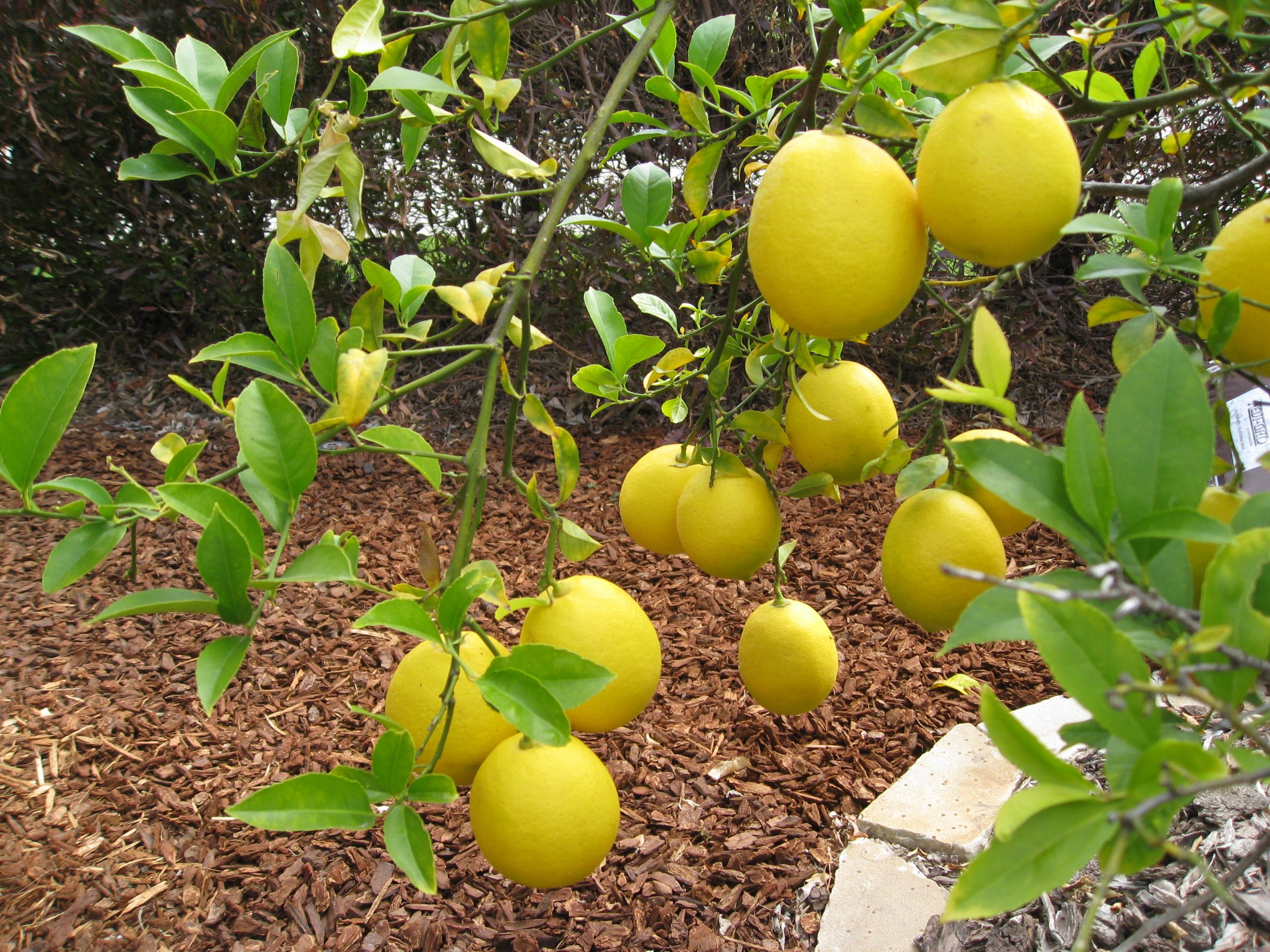
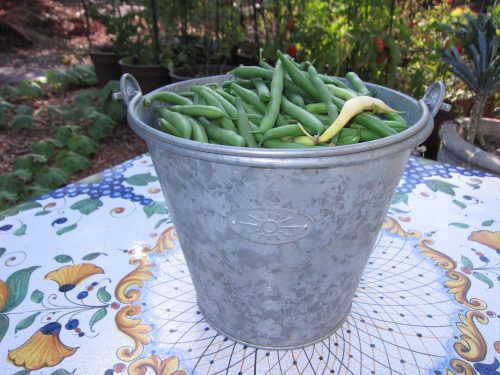

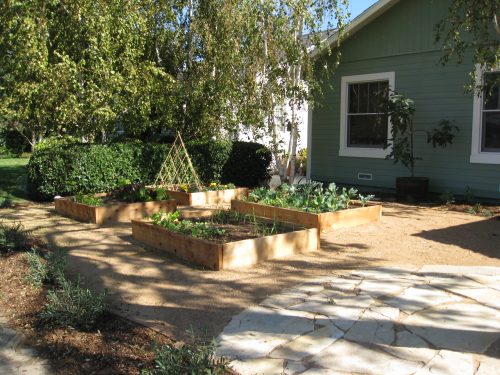
I can’t tell, but I have 3 “trunks” coming up. Wonderful pomegranates are almost all white inside, some brown, and just not good. I bagged them last year and that resolved the hole problem, but not a one was any good. I added a bit of iron to the soil. Another friend in the area said hers were the same. Very hot summer in AZ in 2023. I’m wondering if only one of the trunks is the grafted one? Wish I could post photos. Can a graft grow into three trunks? I did trim it to be a tree over the years. I did see some red in some the arils over the years, and had maybe one good, small, pomegranate years ago.
Sorry to hear about your pomegranate, Jane. It’s possible that suckers from the rootstock have taken over part of the tree, but pomegranates are generally a multi-trunk tree to begin with. If you can’t tell where the graft union is on your tree trunk, you may want to check with a local arborist who is familiar with fruit trees for help. That said, I think another great resource is Greg Peterson of The Urban Farm. He grew fruit trees for more than 50 years in Arizona and he would have a lot of tricks to help you grow fruit there. His website is: https://www.urbanfarm.org/ Contact him and tell him Gardenerd sent you.
The suckers on my orange tree have completely overtaken it. Is there any way I can revert it back to be able to bear fruit? It was a tribute to my daughter that had passed so it is important to me
Sorry to hear your tribute tree has been overtaken with rootstock. If you can identify at least one trunk or shoot that is from the original graft, you can keep that one and cut away the rest. Start by cutting away obvious rootstock shoots. If none of the original is left, you might consider either bringing in a scion of the desired fruit to graft onto the existing rootstock, or create a new memorial planting for your daughter.
If the whole tree is rootstock, another option would be to graft in one (or several) desired cuttings, and then over several years prune to favor those branches.
True!
I am so hoping y’all can help me. I have a citrus tree that I planted about 5 years ago. I just learned that it has been taken over by root stock which I didn’t even know existed until recently. There is no hope for the original tree, but the root stock is thriving. I want to try to graft some new branches into the root stock from my other citrus trees. However, the root stock is now about 10 feet tall with a thick trunk. (Again, I didn’t even know that root stock was a thing until someone just told me about it when I was asking about why my tree was so healthy but never produced fruit). So, my question is….. Do I cut the root stock all the way down to a foot or two above the ground and lop off all of its branches, and then just try to graft branches into the trunk? Or do I leave some root stock branches and try to graft to those? Any help would be so appreciated. Thank you!
I’m not the expert on grafting to a stump, but it is possible to cut off the rootstock and graft a few scions from an existing fruiting tree in a circle around the outer edge. Search for videos on “rind grafting” or “grafting onto a stump” and you’ll see what I mean.